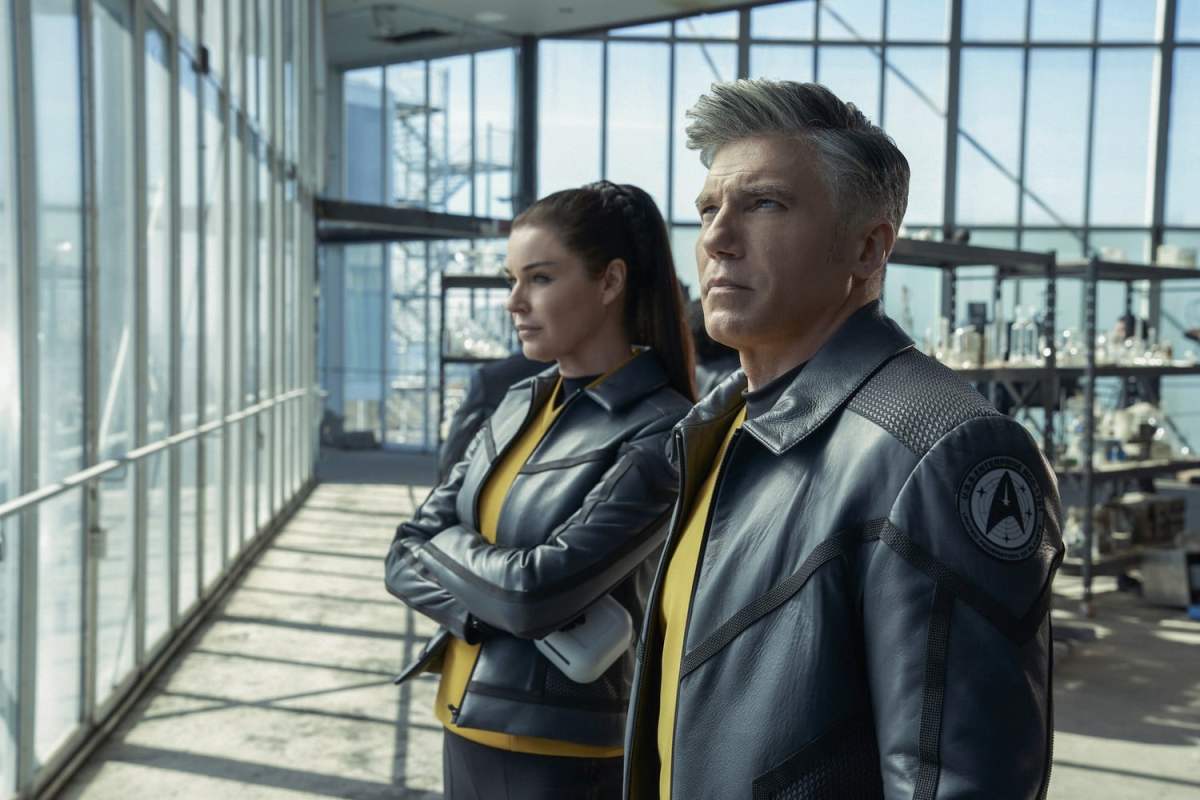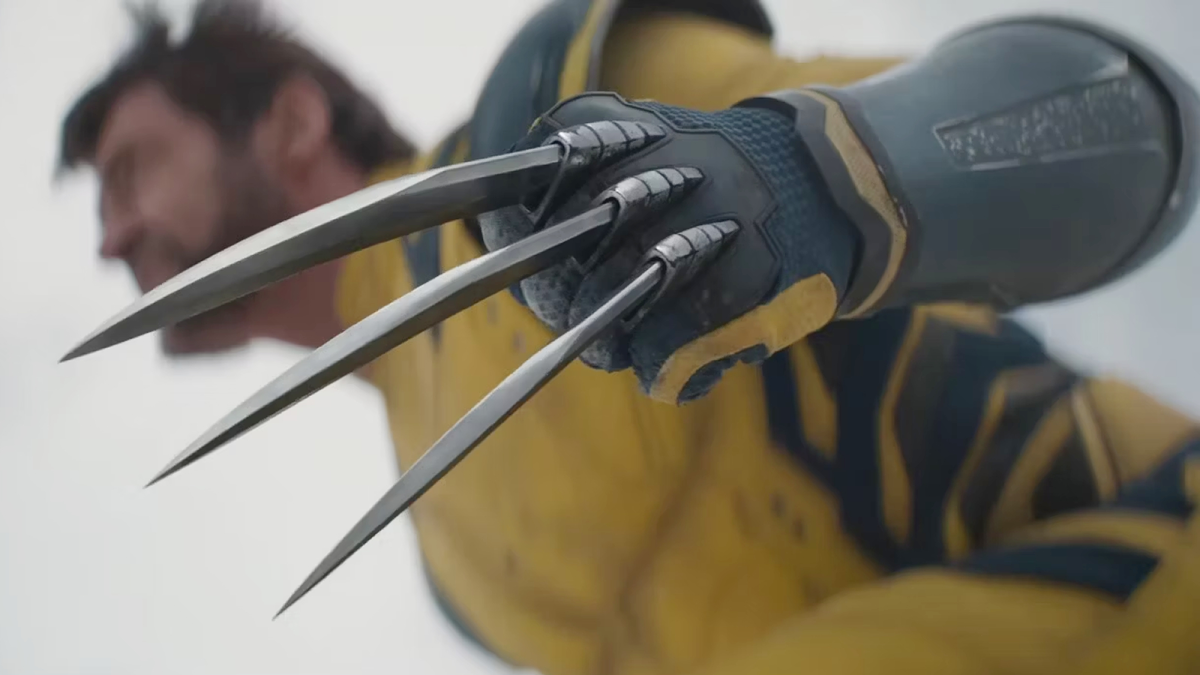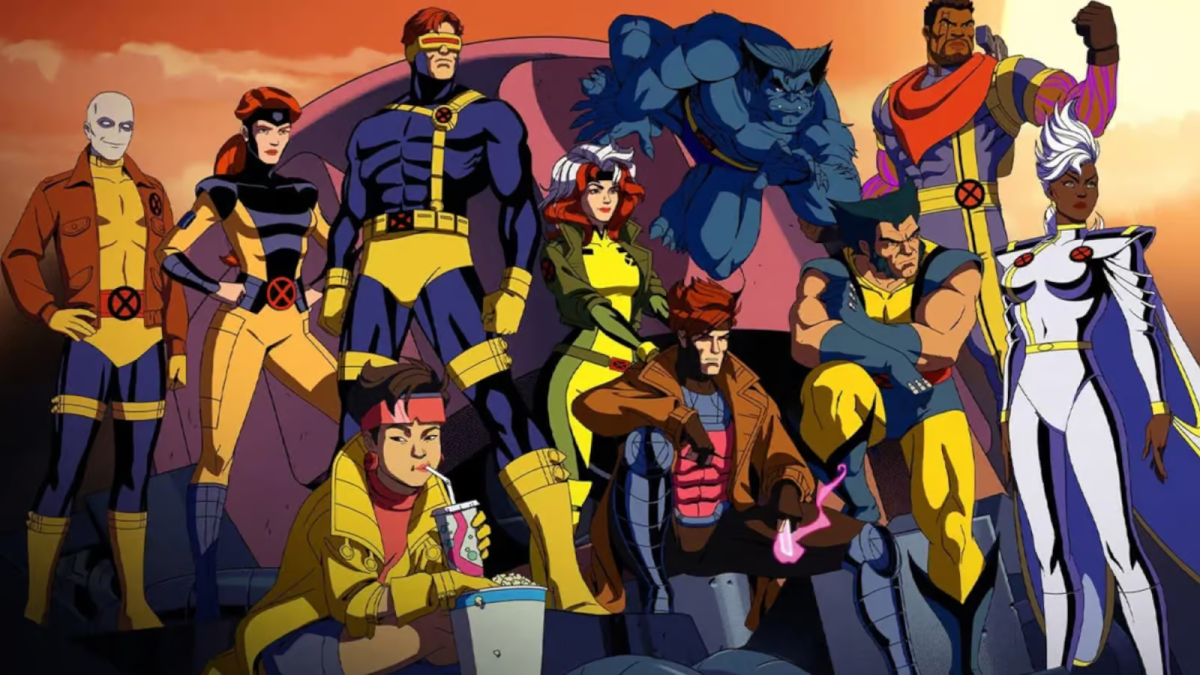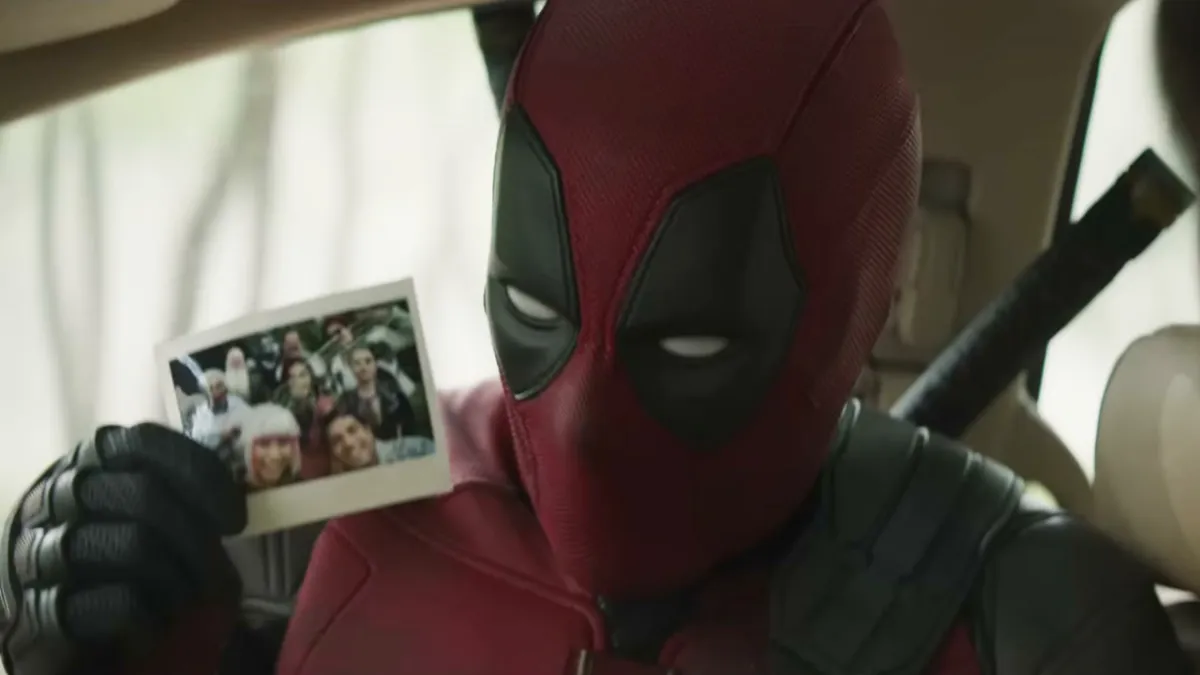This discussion and review contains spoilers for Star Trek: Strange New Worlds episode 3, “Ghosts of Illyria.”
“Ghosts of Illyria” is more interesting in concept than in execution.
As with both “Strange New Worlds” and “Children of the Comet” before it, “Ghosts of Illyria” is another example of Strange New Worlds hitting a familiar Star Trek standard. It is an episode that is recognizably drawn from a template that the franchise has employed repeatedly over its 50-plus-year history, and it hits all of the various beats expected along the way. It would be somewhat dismissive to describe “Ghosts of Illyria” as formulaic and predictable, but it wouldn’t be unfair.
“Ghosts of Illyria” is an episode with two parallel plot threads. The first of these threads concerns the spread of an unexplained illness on the ship that causes irrational behavior. Tying back to the franchise’s oft-overlooked psychedelic roots, “Ghosts of Illyria” is essentially built around the idea that madness can be contagious. The ship is contaminated by a virus that spreads through light, creating “light addicts” who engage in reckless behavior to satisfy their addiction.
This is a familiar Star Trek storytelling device. “The Naked Time” might be the most obvious and popular example, even inspiring a direct sequel in “The Naked Now” during the first season of The Next Generation. However, there are plenty of episodes built around a similar premise. Language broke down in “Babel.” War became contagious in “Dramatis Personae.” Horniness spread from person to person in “Fascination.” Obsessive-compulsive behavior spread in “Singularity.”

Perhaps reflecting the influence of Gene Roddenberry, a notorious philanderer whose only feature film credit outside the franchise was the “sex comedy” Pretty Maids All in a Row, many of these contagions were inappropriately and uncomfortably sexual. Perhaps wisely, “Ghosts of Illyria” largely avoids this angle, although there is some sly acknowledgment of this trend; Ensign Lance (Daniel Gravelle) strips down in the corridor and Number One (Rebecca Romijn) rips her shirt open.
As with “Children of the Comet” lifting fairly directly from “Fight or Flight,” there are practical reasons for Strange New Worlds to fall back on this familiar Star Trek story framework so early in the first season. After all, an infectious disease storyline provides a narrative in which the entire ensemble can be used effectively. It also pushes the cast outside their comfort zone and can reveal potentially interesting or novel facets of the actors to the production team to develop later.
There is a sense that “Ghosts of Illyria” is constructed primarily as a piece of setup, using this familiar template to lay groundwork that may pay off down the line, helping the writers and producers to identify standout performers or interesting dynamics that can be explored with greater purpose in later episodes. Notably, the episode introduces a number of potential long-form story arcs, such as M’Benga’s (Babs Olusanmokun) tragic backstory, that seem likely to come into play later.
The episode’s secondary plot thread focuses on Pike (Anson Mount) and Spock (Ethan Peck) stranded on Illyria and is a much more generic sort of story. The initial premise of the episode is an empty or missing world. The original Star Trek was populated with haunted and long-dead planets in stories like “The Man Trap” or “The City on the Edge of Forever” or eerily abandoned spaces like those in “Miri” or “Wink of an Eye.”

That said, the plot thread focused on Pike and Spock quickly reveals itself to be a “stranded away team” story as an ion storm bears down on the facility, recalling everything from “The Galileo Seven” to “The Enemy” to “The Ascent.” It’s a story model that isn’t quite as practical as the contagion template, in that the success or failure of the story largely depends on the chemistry of the actors and the strength of the characters involved.
It’s unclear whether the problem is with the scripts or with the performers, but Mount and Peck lack a compelling dynamic necessary to drive a story like this. Leonard Nimoy worked brilliantly with both William Shatner and DeForest Kelley on the original Star Trek, and Zachary Quinto bounced well off Chris Pine in the Star Trek reboot movies. Mount is a charismatic presence, but Strange New Worlds fails to have a particularly fresh or interesting take on the relationship between Pike and Spock.
There is something frustrating in how Strange New Worlds seems content to simply “play the hits” and recycle a model of Star Trek that is decades old. In some ways, Strange New Worlds plays as an unironic version of Lower Decks. Lower Decks couches its nostalgia in self-aware irony, which feels like a concession to the fact that this model of storytelling is perhaps better suited to modern half-hour comedies than modern hour-long drama. Strange New Worlds just plays these clichés straight.
That said, as with “Children of the Comet,” there is something to be said for the finer details of “Ghosts of Illyria.” In particular, following off the portrayal of Adam Soong (Brent Spiner) in the second season of Star Trek: Picard, it is interesting to see Strange New Worlds engaging so directly with the franchise’s longstanding anxiety over genetic engineering and transhumanism. It’s a fear that has a long history in the franchise, dating back to “Space Seed.”

“Ghosts of Illyria” acknowledges that the franchise’s fears about genetic modification aren’t entirely rational, given both the episode’s title and Pike’s observation that even visiting a planet associated with genetic engineering is enough to put “everyone on edge.” There’s a sense that the Federation’s concerns about genetic engineering, rooted in the trauma of the Eugenics Wars, has created a reflexive emotional reaction against the concept that is at odds with the franchise’s techno-futurism.
Star Trek generally argues that technological advances will make life better and easier for people — that the replicator will eliminate hunger, that the transporter will make it possible to travel instantaneously, that the universal translator will allow people to talk more freely. As such, the franchise’s fear of genetic engineering ignores the reality that genetic modification is already making a meaningful improvement to people’s lives.
The most compelling facet of “Ghosts of Illyria” is the implication that the Federation’s attitude towards genetic engineering — and societies that employ it — is a form of prejudice. The Federation fundamentally misunderstands Illyria. “My people were never motivated by domination,” Number One explains. “Illyrians seek collaboration with nature. By bio-engineering our bodies, we adapt to naturally existing habitats. Instead of terraforming planets, we modify ourselves.”
“Ghosts of Illyria” suggests the Federation’s attitude is effectively a kind of racism, which is most obvious in the way that La’an Noonien-Singh (Christina Chong) seems to have internalized this rhetoric and allowed it to become a source of self-hatred. At the end of the episode, Pike congratulates Number One for surpassing his assumptions about Illyrians, telling her, “You defy every stereotype the Federation has about Illyrians.”

“Ghosts of Illyria” is smart enough to understand that even Pike’s praise of Number One is an expression of a deeply entrenched prejudice, something similar to futuristic “respectability politics.” As Number One asks, “What would he do if I wasn’t a hero, one of the good ones?” It is a very fair and a very barbed question for the show to ask of its lead character, three episodes in. She continues, “When will it be enough to just be an Illyrian?”
This is a much more nuanced approach to the episode’s central metaphor than the trite “both sides-ism” of “Strange New Worlds,” understanding that just as modern conversations about racism and prejudice have evolved, the Star Trek franchise needs to develop in step. Indeed, given the way that modern Star Trek tends to treat Starfleet and the Federation as idealized fetish objects, it’s good to see an episode built around the notion of institutionalized racism and systemic flaws in the system.
It will be interesting to see how Strange New Worlds develops this theme across the rest of its first season, whether the show will remain as astute in its exploration of the finer contours of the Star Trek universe. It would be refreshing to see a modern Star Trek show that is as willing to engage with the franchise’s more complicated and contradictory elements as Deep Space Nine was. “Ghosts of Illyria” is a small step in that direction — and one that might be walked back, but a step nonetheless.
“Ghosts of Illyria” offers viewers little that they haven’t seen (many times) before. Still, it does offer some fertile ground for Strange New Worlds to explore if it ever starts to feel a bit more comfortable in its skin.





